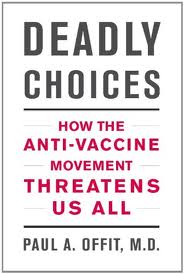February 1st, 2011 by RyanDuBosar in News, Research
No Comments »

Real total direct medical costs of cardiovascular disease (CVD) could triple, from $273 billion to $818 billion (in 2008 dollars) by 2030. Real indirect costs, such as lost productivity among the employed and unpaid household work, could increase 61 percent, from $172 billion in 2010 to $276 billion.
Results appeared in a policy statement of the American Heart Association.
CVD is the leading cause of mortality and accounts for 17 percent of national health expenditures, according to the statement. How much so? U.S. medical expenditures rose from 10 percent of the Gross Domestic Product in 1985 to 15 percent in 2008. In the past decade, the medical costs of CVD have grown at an average annual rate of 6 percent and have accounted for about 15 percent of the increase in medical spending.
The spending is associated with greater life expectancy, “suggesting that this spending was of value,” the authors wrote. But as the population ages, direct treatment costs are expected to increase substantially, even though lost productivity won’t, since seniors are employed at lower rates.
If current prevention and treatment rates remain steady, CVD prevalence will increase by about 10 percent over the next 20 years. The estimate reflects an aging population, and one that is increasingly Hispanic. To prepare for future cardiovascular care needs, the American Heart Association projected future costs. By 2030, 40.5 percent (116 million) of the population is projected to have some form of CVD. Read more »
*This blog post was originally published at ACP Internist*
January 31st, 2011 by Toni Brayer, M.D. in Health Policy, Opinion
1 Comment »

 Author-physician Dr. Atul Gawande has done it again with a well-written article in The New Yorker magazine entitled, “The Hot Spotters.” It deals with the fact that 5 percent of people with chronic illness make up over 50 percent of all healthcare costs.
Author-physician Dr. Atul Gawande has done it again with a well-written article in The New Yorker magazine entitled, “The Hot Spotters.” It deals with the fact that 5 percent of people with chronic illness make up over 50 percent of all healthcare costs.
If we can zero in on providing better preventive care for those people, we can finally get our arms around runaway healthcare costs. How great that you don’t even have to have a New Yorker subscription to read it. Here are a few cliff notes until you get to it:
— In Camden, New Jersey, one percent of patients account for one-third of the city’s medical costs. By just focusing attention on the social and medical outpatient needs of those people, they not only got healthier but costs were cut in half.
— Our current system is unable to reign in costs. We need to completely re-design and fund how we do primary care.
— Charging high co-payments to people with health problems just backfires. They avoid preventive care and end up hospitalized with expensive and life-threatening illnesses that are much worse and more costly. Read more »
*This blog post was originally published at EverythingHealth*
January 31st, 2011 by Bryan Vartabedian, M.D. in Book Reviews, Opinion
No Comments »

 A friend suggested she was tired of hearing about vaccines. Her comment and our subsequent conversation seemed to reflect an important shift in parent sentiment: The conversation about vaccines is beginning to get somewhere.
A friend suggested she was tired of hearing about vaccines. Her comment and our subsequent conversation seemed to reflect an important shift in parent sentiment: The conversation about vaccines is beginning to get somewhere.
While much of this was born of the mainstream media’s newfound realization that the vaccine-autism connection was cooked, some of this is due to the tireless work of those like the Children’s Hospital of Philedelphia’s Dr. Paul Offit who get the story right.
As part of his passionate agenda to expose vaccine truths, he’s published “Deadly Choices: How the Anti-vaccine Movement Threatens Us All” (Basic Books, 2011). For those looking to understand the origins of anti-vaccine sentiment, read this book.
What struck me is the deep history behind the anti-vaccine movement. From Jenner’s smallpox fix to modern-day MMR struggles, Offit draws fascinating corollaries surrounding immunization that seem to defy the generations. Vaccine resistance was not born of Andrew Wakefield, but broader concerns rooted in religion, individual liberty, fear and propaganda. “Deadly Choices” puts the anti-vaccine movement in a historic sequence that reads like good suspense. I couldn’t put it down. Read more »
*This blog post was originally published at 33 Charts*
January 26th, 2011 by GarySchwitzer in Health Tips, Opinion
1 Comment »

 The February issue of Prevention magazine has an article entitled “Surprising Faces of Heart Attack” profiling “three women (who) didn’t think they were at high risk. Their stories are proof that you could be in danger without even knowing it.” No, their stories are not proof of that.
The February issue of Prevention magazine has an article entitled “Surprising Faces of Heart Attack” profiling “three women (who) didn’t think they were at high risk. Their stories are proof that you could be in danger without even knowing it.” No, their stories are not proof of that.
The story is about three women in their 40s. The story varyingly states that the three should have had the following screening tests:
— Advanced cholesterol test, carotid intimal medial thickness test ( CIMT)
— Advanced cholesterol test and stress echocardiography
— Cardiac calcium scoring and CIMT
There’s an accompanying piece: “7 Tests You’re Not Having That Could Save Your Life.”
 I asked one of our HealthNewsReview.org medical editors, Harold Demonaco, director of the Innovation Support Center at the Massachusetts General Hospital, to review the two pieces. As his day-job title suggests, he deals with review of the evidence for new and emerging healthcare technologies. He wrote:
I asked one of our HealthNewsReview.org medical editors, Harold Demonaco, director of the Innovation Support Center at the Massachusetts General Hospital, to review the two pieces. As his day-job title suggests, he deals with review of the evidence for new and emerging healthcare technologies. He wrote:
The section “7 Tests you are not having that could save your life” states: “If you have not had these cutting edge screenings, put this magazine down and call your doctor. Now.”
Wow. While much of the information is correct, it is the context that is disturbing. Suggesting that these tests are essential in everyone is a bit over the top. Some of the information provided for each test is basically correct. However in some cases the recommendations go well beyond national guidelines.
The major issue here is the tacit assumption that tests are infallible, without any downsides and are always a good thing. That is simply not the case. So who should get these tests? Read more »
*This blog post was originally published at Gary Schwitzer's HealthNewsReview Blog*
January 24th, 2011 by Lucy Hornstein, M.D. in Better Health Network, Opinion
No Comments »

A reader requests:
Can you do a post on what procedures constitute a thorough physical, in your opinion? I haven’t had one in several years and thinking of making an appointment now. The last doctor I went to didn’t even listen to my heart or go though the motions with feeling my belly and that stuff. And of the last three doctors I went to, I realized they didn’t bring up my immunization records. Is this usually left for the patients to bring up on their own?
Good question. What exactly is a physical? Does it include blood work? What about an EKG? And a cardiac stress test? Is an “executive physical” an orgy of “more is better,” previously paid lavishly, really better than a “camp physical?”
Here’s the thing: There is no such thing as a “complete physical examination.” There are literally hundreds of different maneuvers and procedures that encompass various aspects of physical diagnosis. Performing every last one of these on even a single patient would not only take many hours, it would be a colossal waste of time.
A “physical” is a misnomer. The clinical portion of a medical workup is more correctly termed the “history and physical.” Of the two, everyone agrees that the history — information elicited from the patient, sometimes from family members or other medical records — is far more likely to yield useful information. It is the information gleaned from the history that guides the physical.
Knee pain? The history should include mechanism of injury, and physical exam should evaluate for McMurry, Lachman, and drawer signs, among other maneuvers. Bellyache? Need to know about associated symptoms such as nausea, vomiting, stool pattern, flatus, and the exam better include careful auscultation (listening) for bowel sounds and palpation (feeling) for masses, fluid, possible shifting dullness, plus eliciting any guarding or rebound, and probably a rectal exam looking for blood. It makes no sense to use a tuning fork for Rinne and Weber tests to evaluate different kinds of hearing loss on someone with heartburn. Likewise, evaluating the debilitating heel pain of plantar fasciitis does not require listening to the lungs. I trust you get the idea.
The question appears to be about the “routine physical” in the absence of any specific medical concern. A more accurate term for this is a “preventive service” visit, for which there are specific guidelines. Read more »
*This blog post was originally published at Musings of a Dinosaur*








 The February issue of Prevention magazine has an article entitled “Surprising Faces of Heart Attack” profiling “three women (who) didn’t think they were at high risk. Their stories are proof that you could be in danger without even knowing it.” No, their stories are not proof of that.
The February issue of Prevention magazine has an article entitled “Surprising Faces of Heart Attack” profiling “three women (who) didn’t think they were at high risk. Their stories are proof that you could be in danger without even knowing it.” No, their stories are not proof of that. I asked one of our HealthNewsReview.org medical editors, Harold Demonaco, director of the Innovation Support Center at the Massachusetts General Hospital, to review the two pieces. As his day-job title suggests, he deals with review of the evidence for new and emerging healthcare technologies. He wrote:
I asked one of our HealthNewsReview.org medical editors, Harold Demonaco, director of the Innovation Support Center at the Massachusetts General Hospital, to review the two pieces. As his day-job title suggests, he deals with review of the evidence for new and emerging healthcare technologies. He wrote: 








